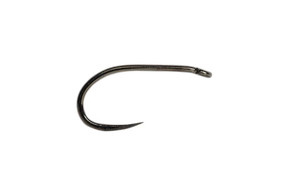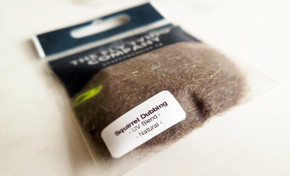Origin and History
The Gold-ribbed Hare’s Ear (GRHE) is one of the most traditional and versatile nymph patterns in fly fishing history. It was popularised in the 19th century by American anglers but has been widely used in the UK ever since. Designed to imitate a wide variety of aquatic insects, it is equally effective for trout in rivers, streams, and stillwaters. Its natural body tones, combined with the shiny gold rib, make it irresistible to fish searching for nymphs.
Materials
- Hook: Nymph or wet fly hook, sizes 12–18
- Thread: Brown or black 8/0
- Body: Natural hare’s ear dubbing
- Rib: Fine gold wire
- Hackle: Soft brown cock or hen for thorax
- Optional Wing Case: Turkey quill or CDC fibres
Popular Variations
- GRHE with beadhead for added weight and sparkle
- Soft hackle GRHE for a more lifelike movement in slow water
- Olive-dubbed body version for matching local mayfly nymphs
- GRHE with peacock herl thorax for flash and contrast
- GRHE emerger style – longer CDC wing fibres to imitate emerging insects
Step-by-Step Tying Guide
- Secure the hook in the vice and attach thread behind the eye, winding down to the bend.
- Tie in the gold wire at the bend for ribbing.
- Apply hare’s ear dubbing to the thread and build a tapered body up to mid-shank.
- Wrap the gold wire in evenly spaced turns along the body, securing near the thorax.
- Tie in a soft brown hackle at the thorax and palmer or wrap it lightly to imitate legs.
- Optionally, tie in a small turkey quill or CDC wing case on top.
- Finish with a neat thread head, whip finish, and optional varnish.
Seasonality & Representation
The GRHE is highly versatile and effective from early spring through late autumn. It imitates a broad range of aquatic nymphs and larvae, making it an excellent choice when trout are feeding sub-surface. It can be fished as a single nymph, in tandem, or as part of a team under a dry fly.
Tackle and Setup
- Rod: 9–10ft, 4–6wt for rivers; 5–6wt for stillwaters
- Line: Floating line for tandem setups or intermediate/sink-tip for deeper fishing
- Leader: 9–12ft tapered, 4–6X tippet
- Presentation: Dead drift, subtle jig, or short pulls to mimic nymph movement
Summary Table
| Aspect | Details |
|---|---|
| Origin | 19th century, USA/UK tradition |
| Best Seasons | Spring to Autumn |
| Represents | Nymphs, larvae, general sub-surface insects |
| Hook Sizes | 12–18 |
| Tackle Setup | 9–10ft rod, floating/intermediate line, 9–12ft leader |












